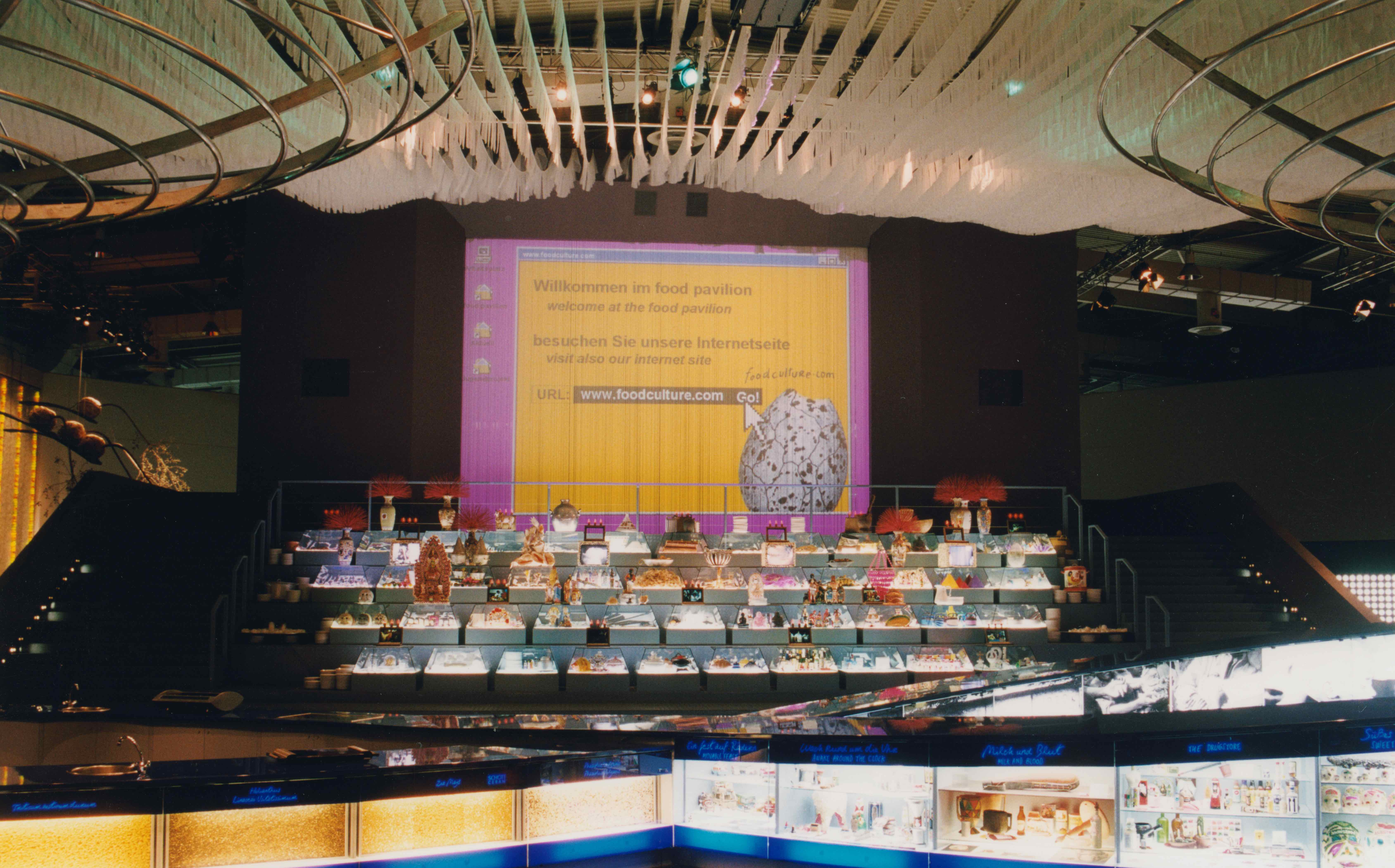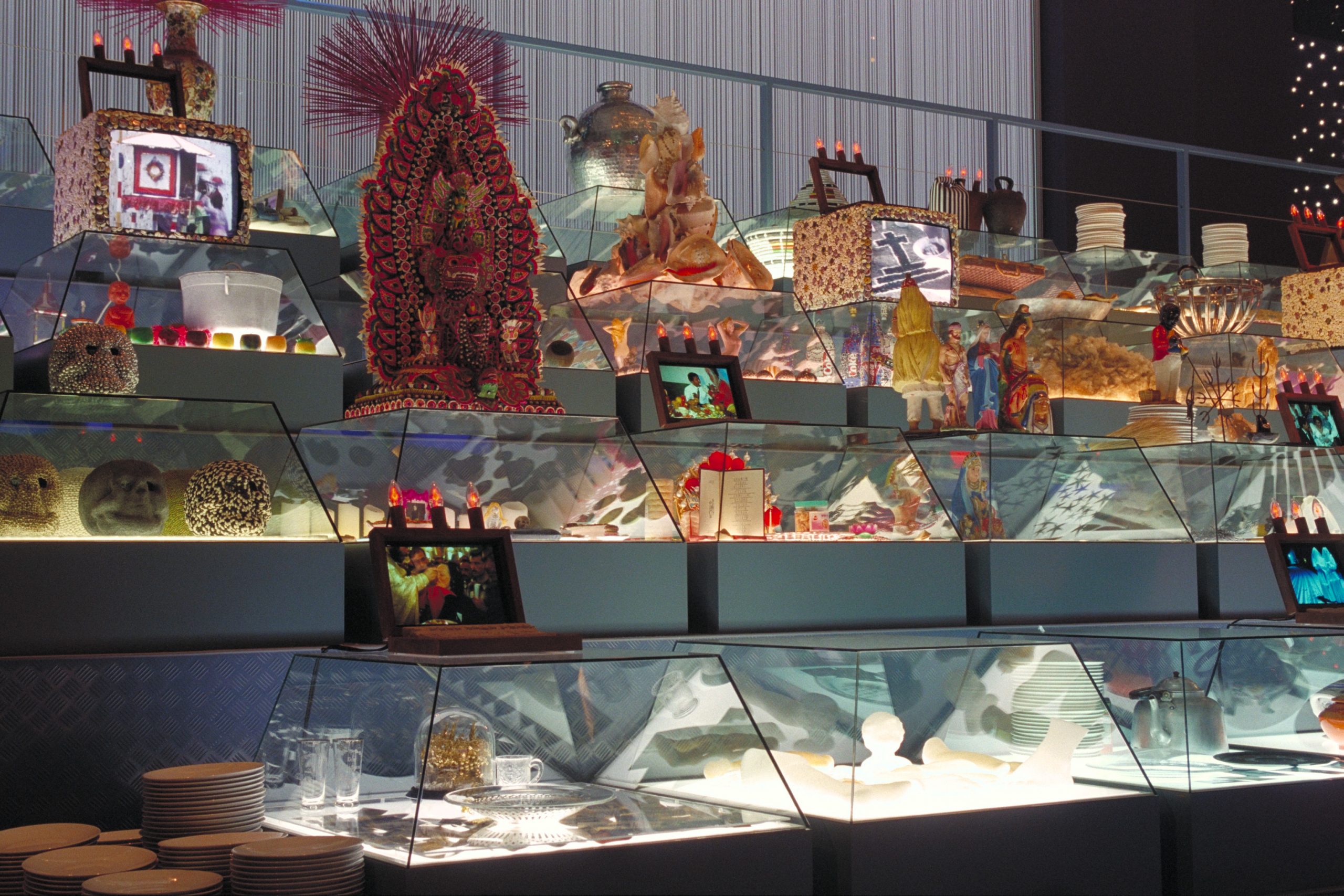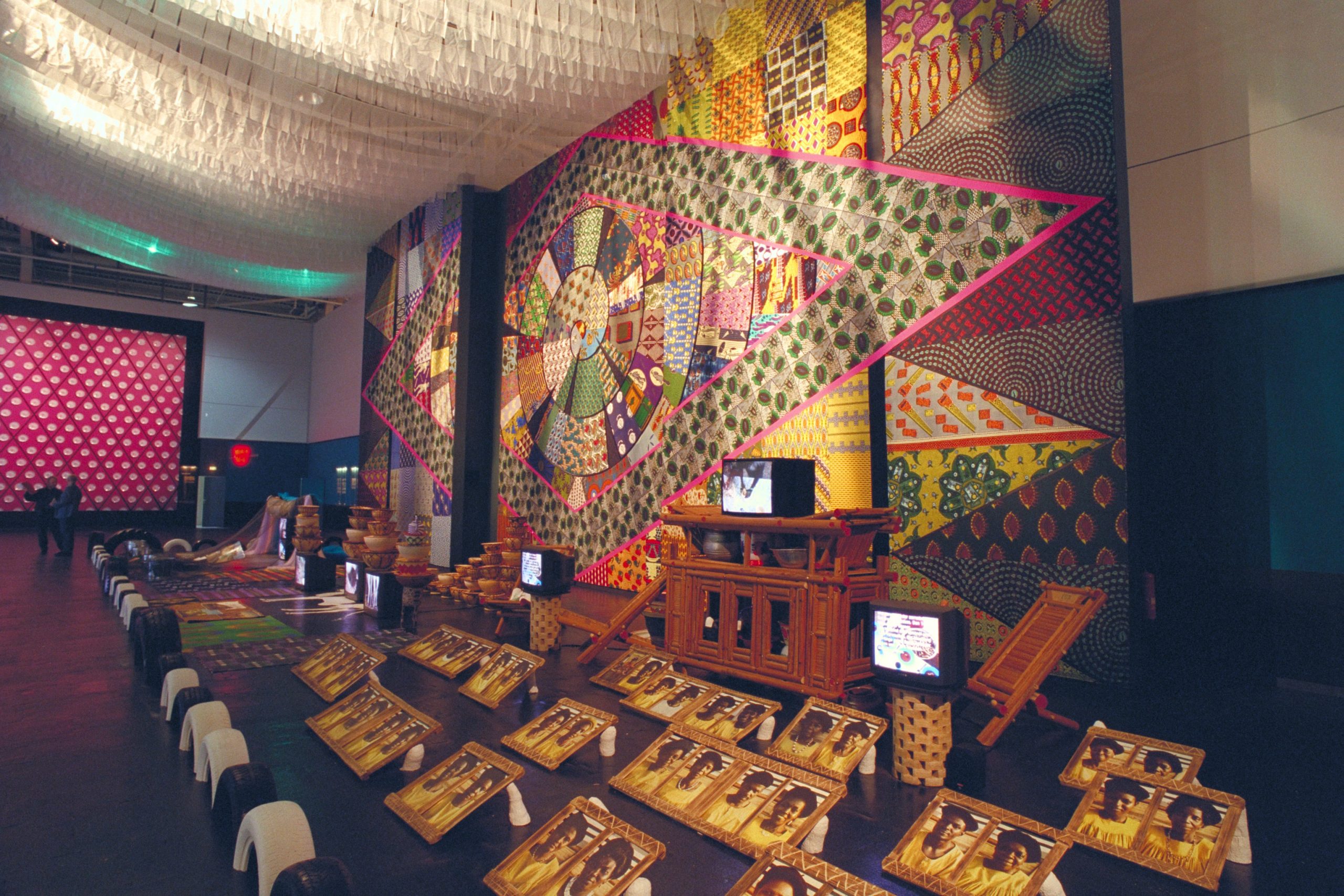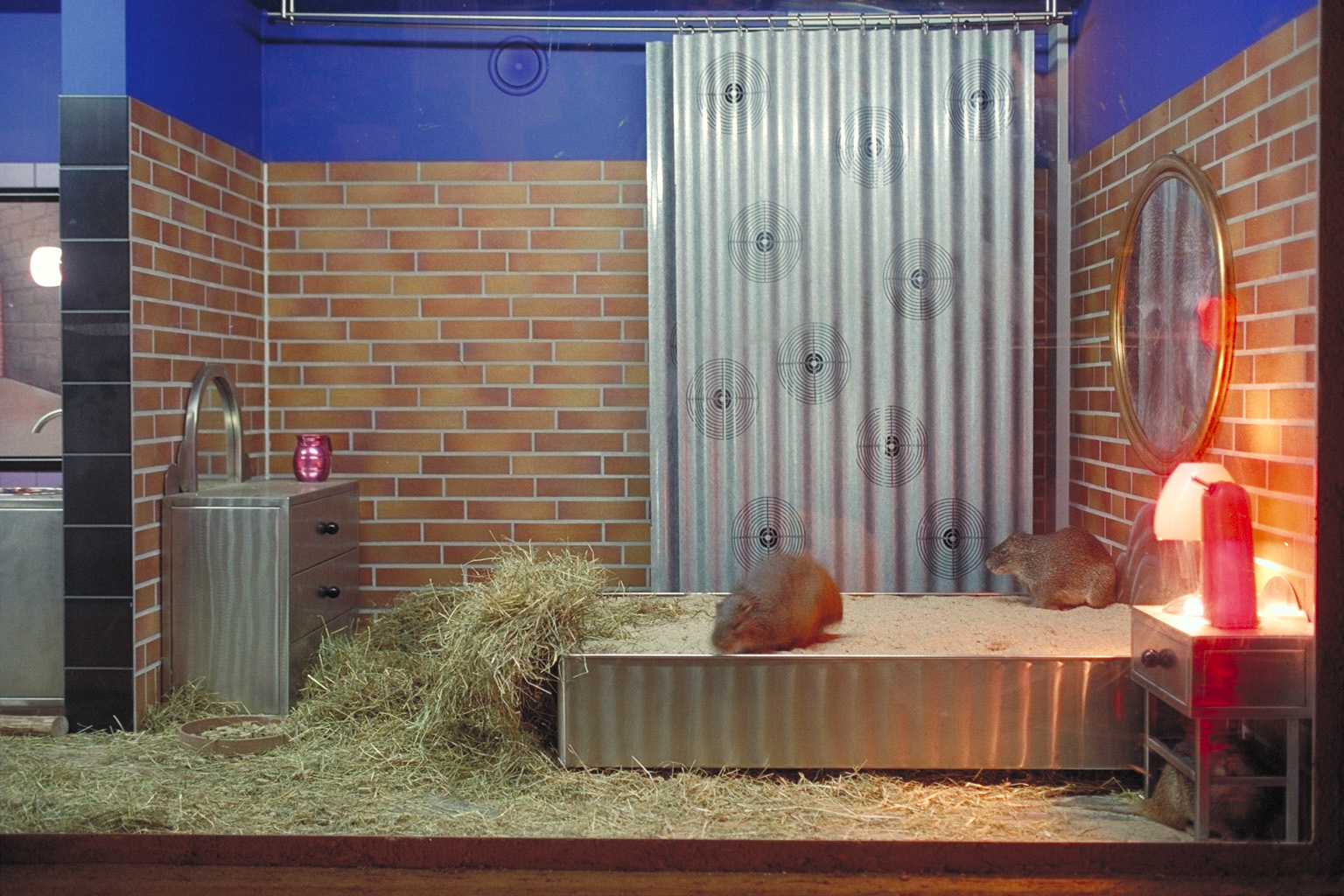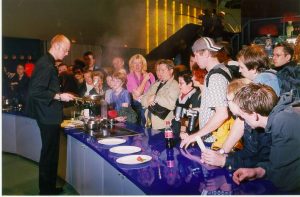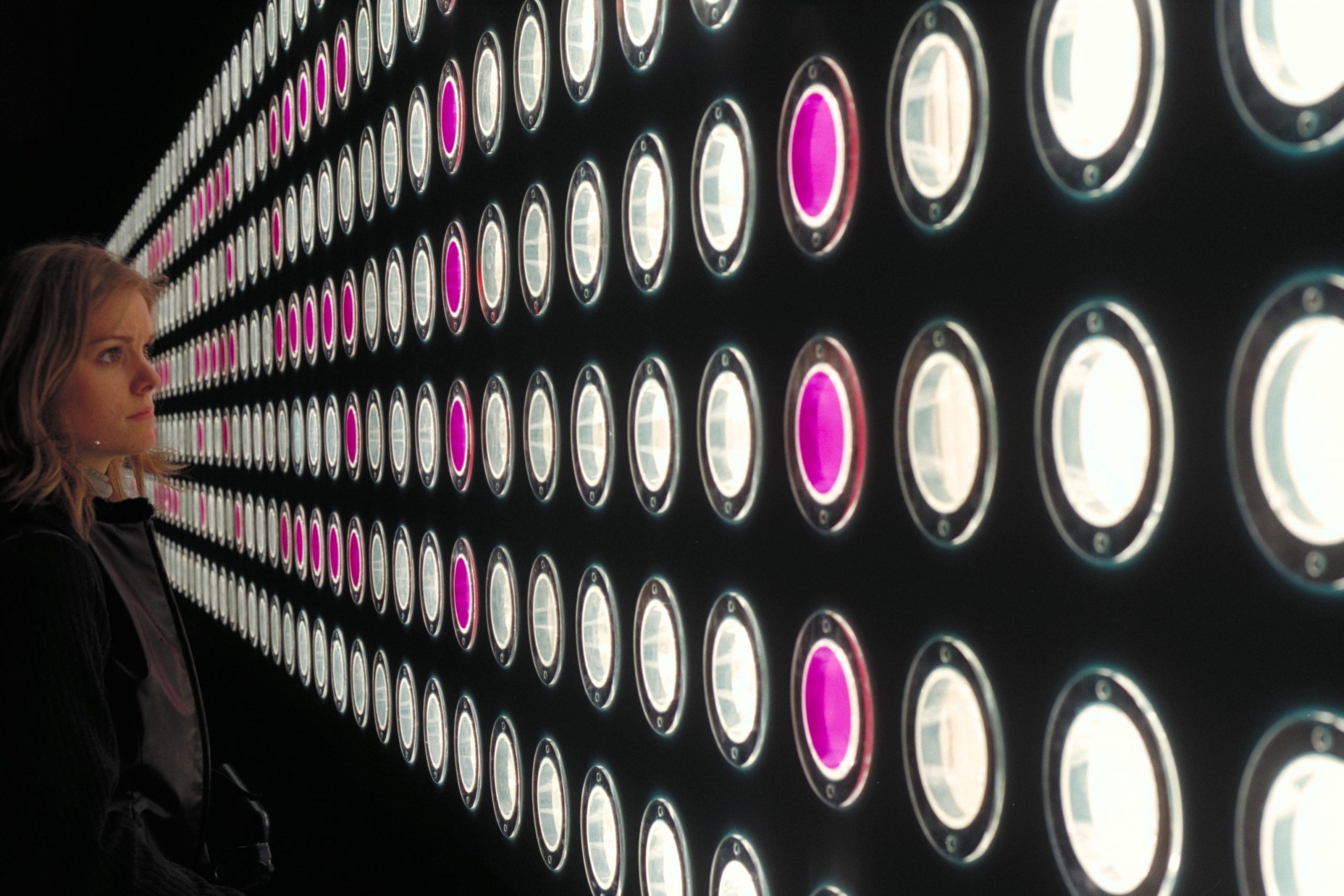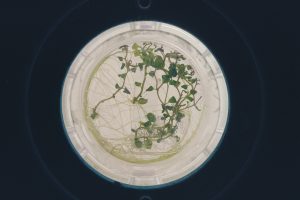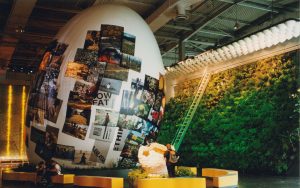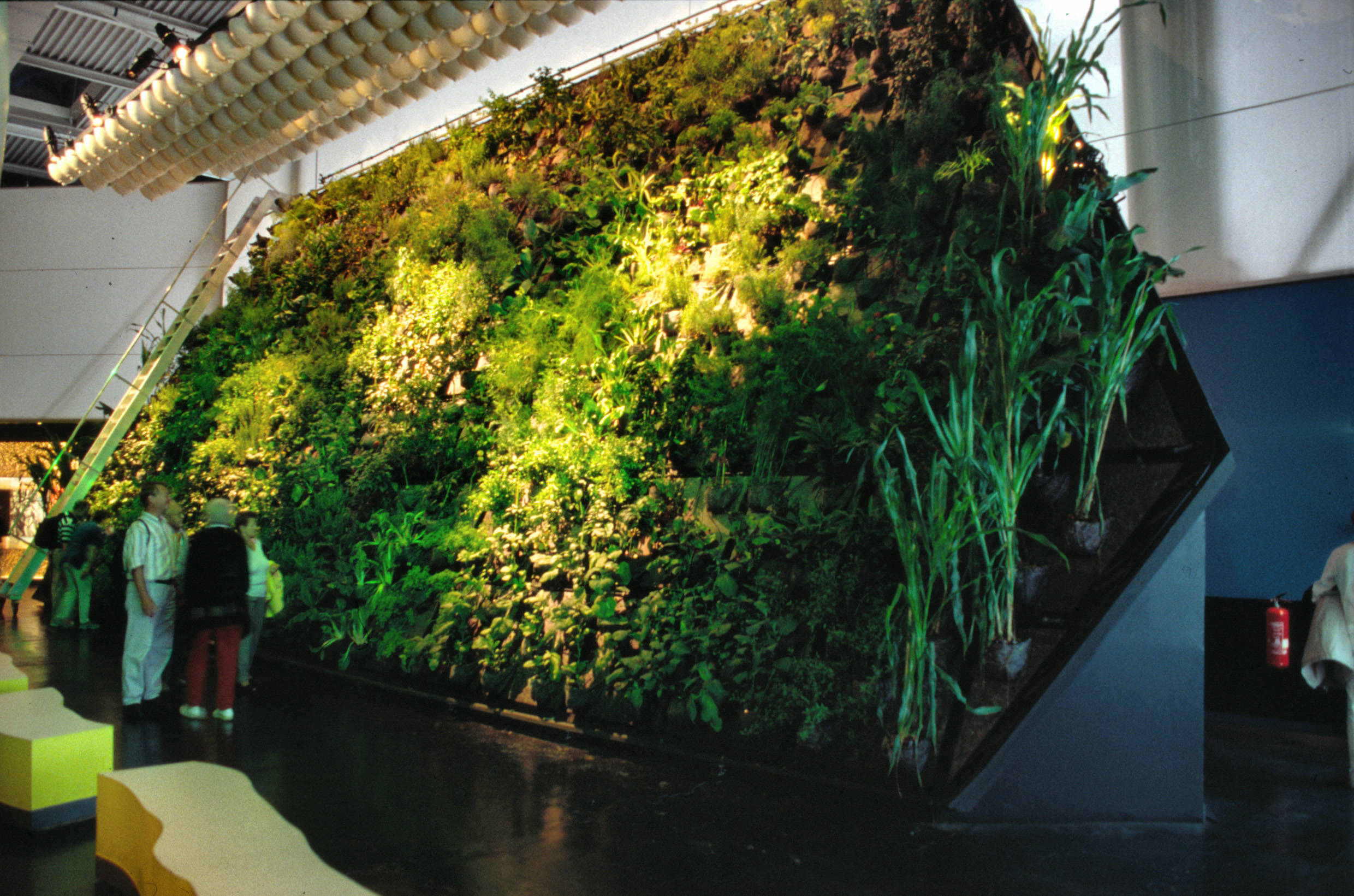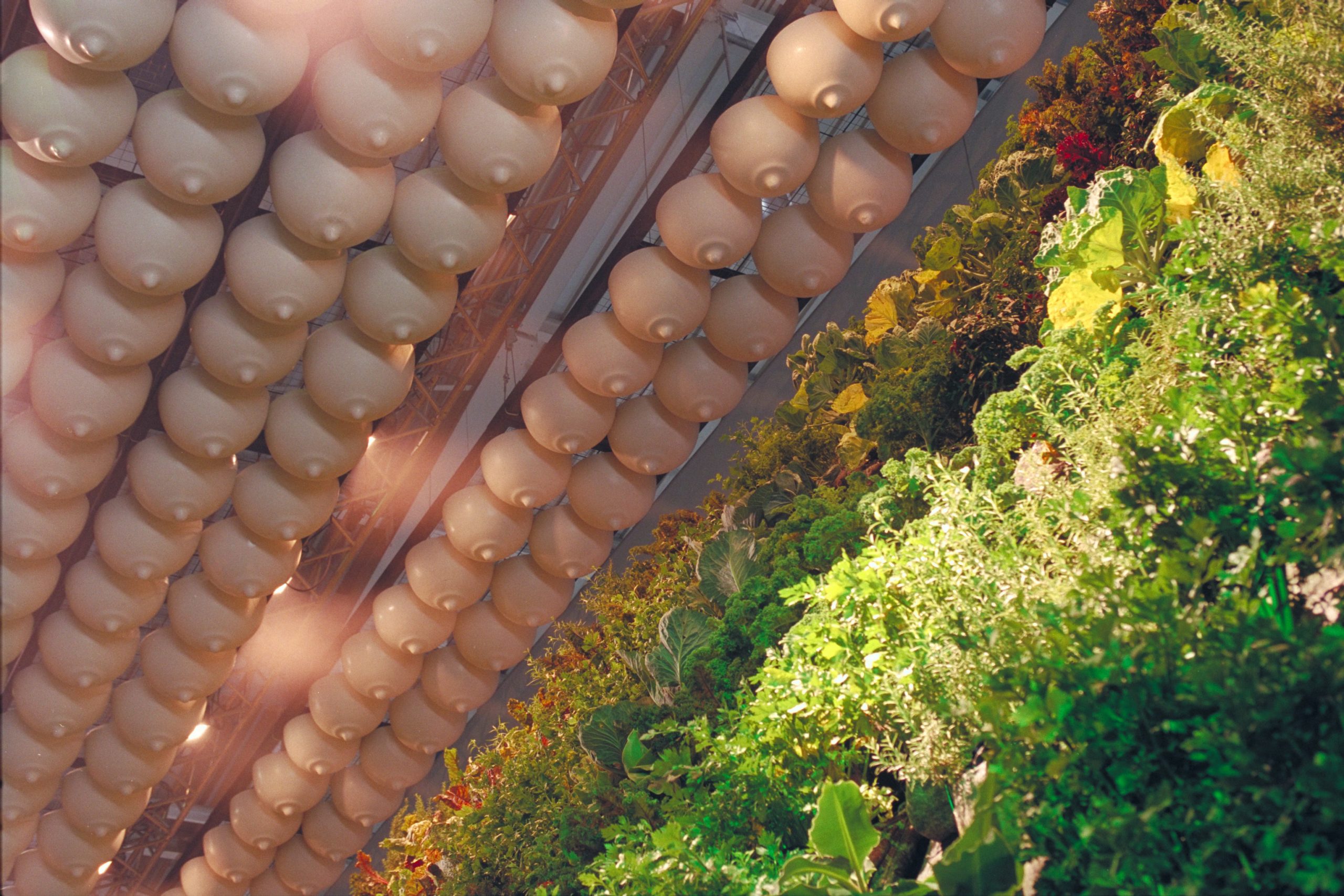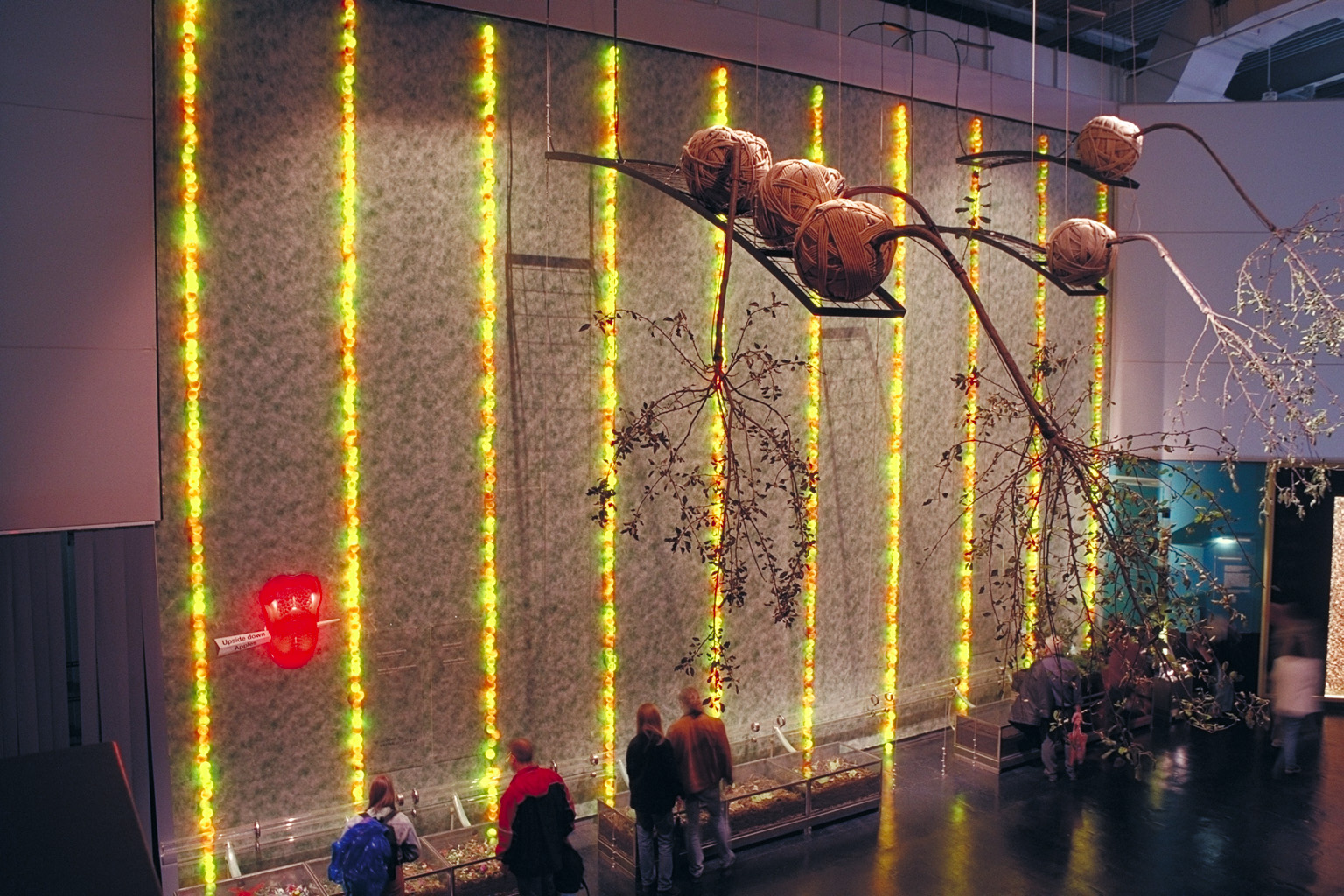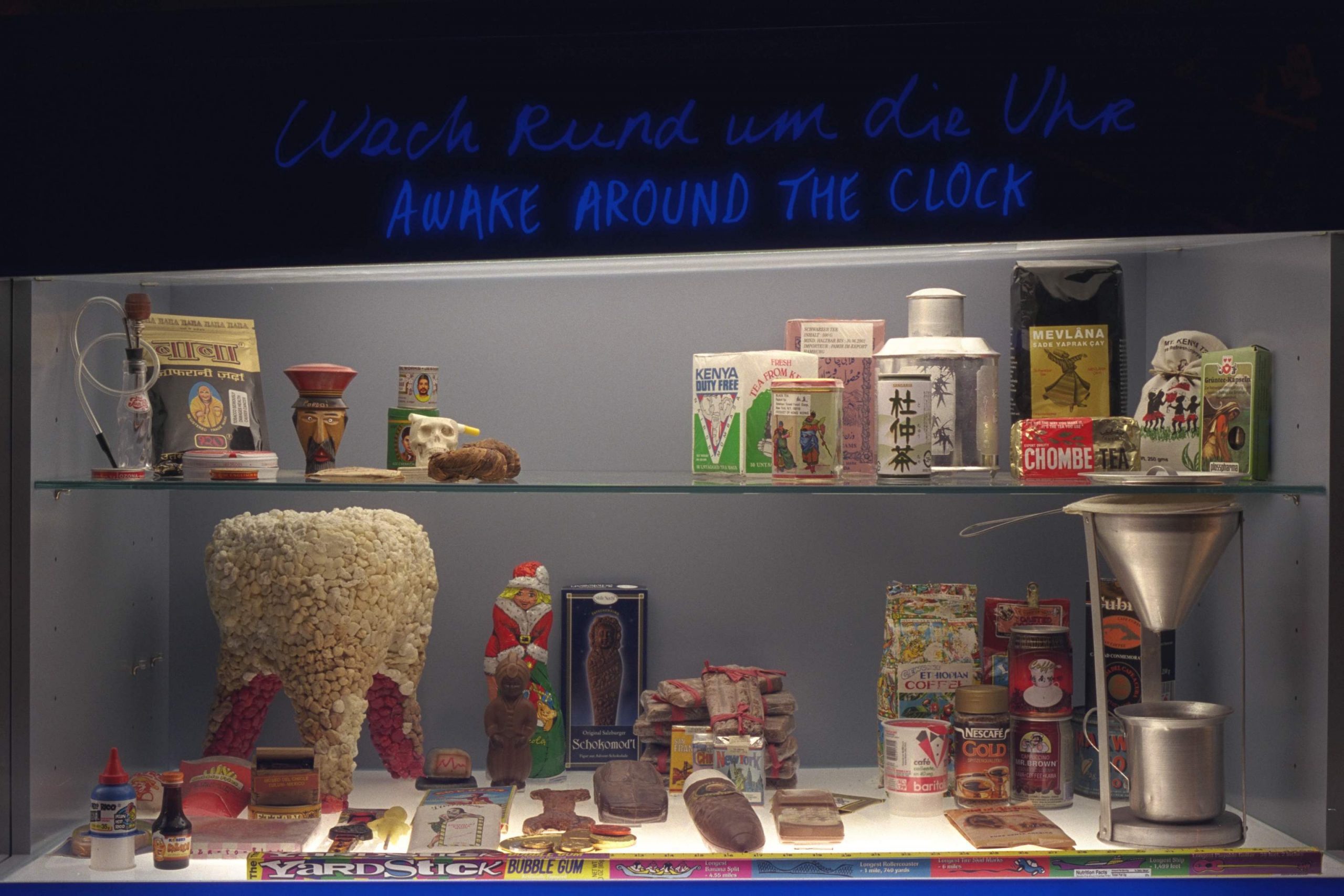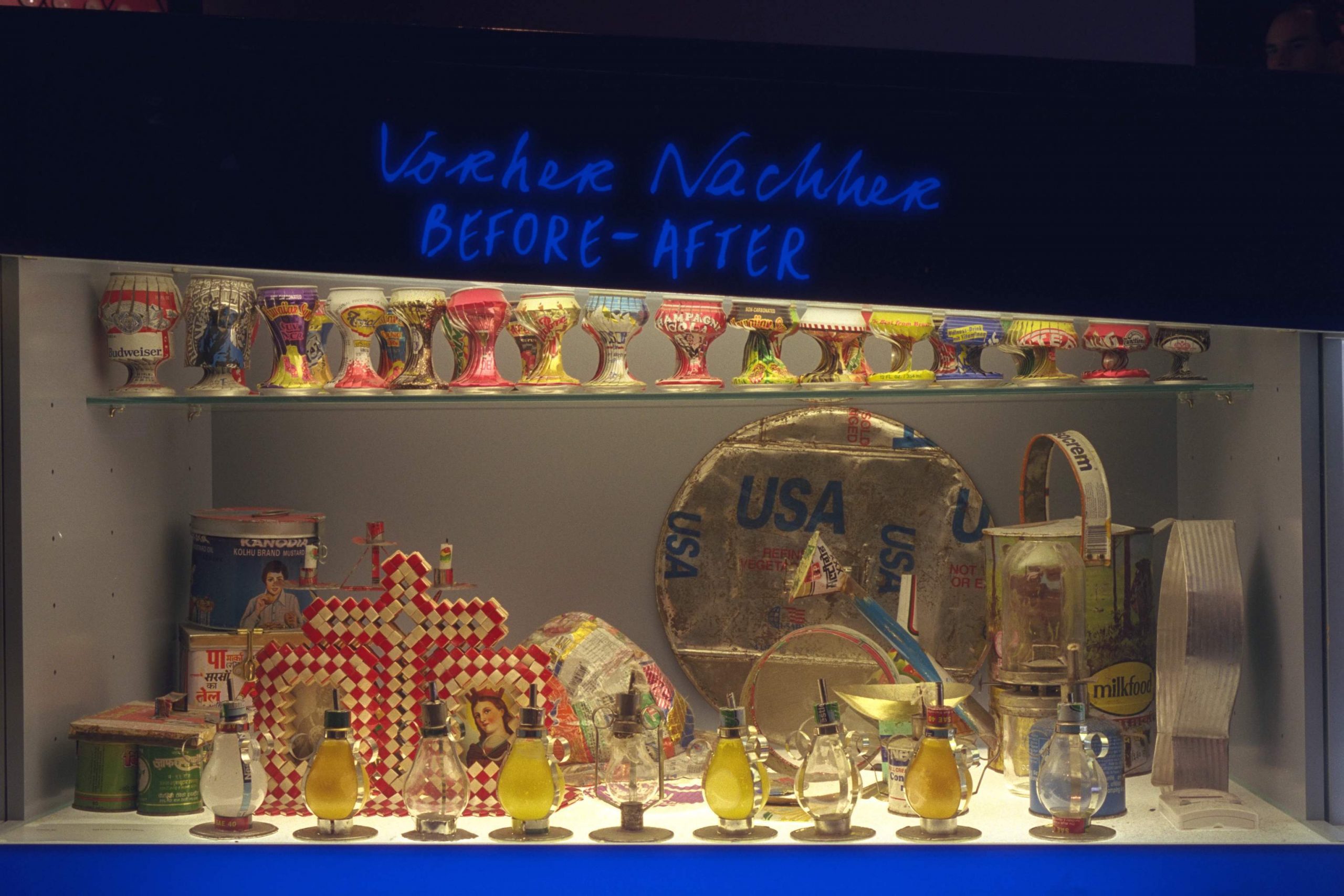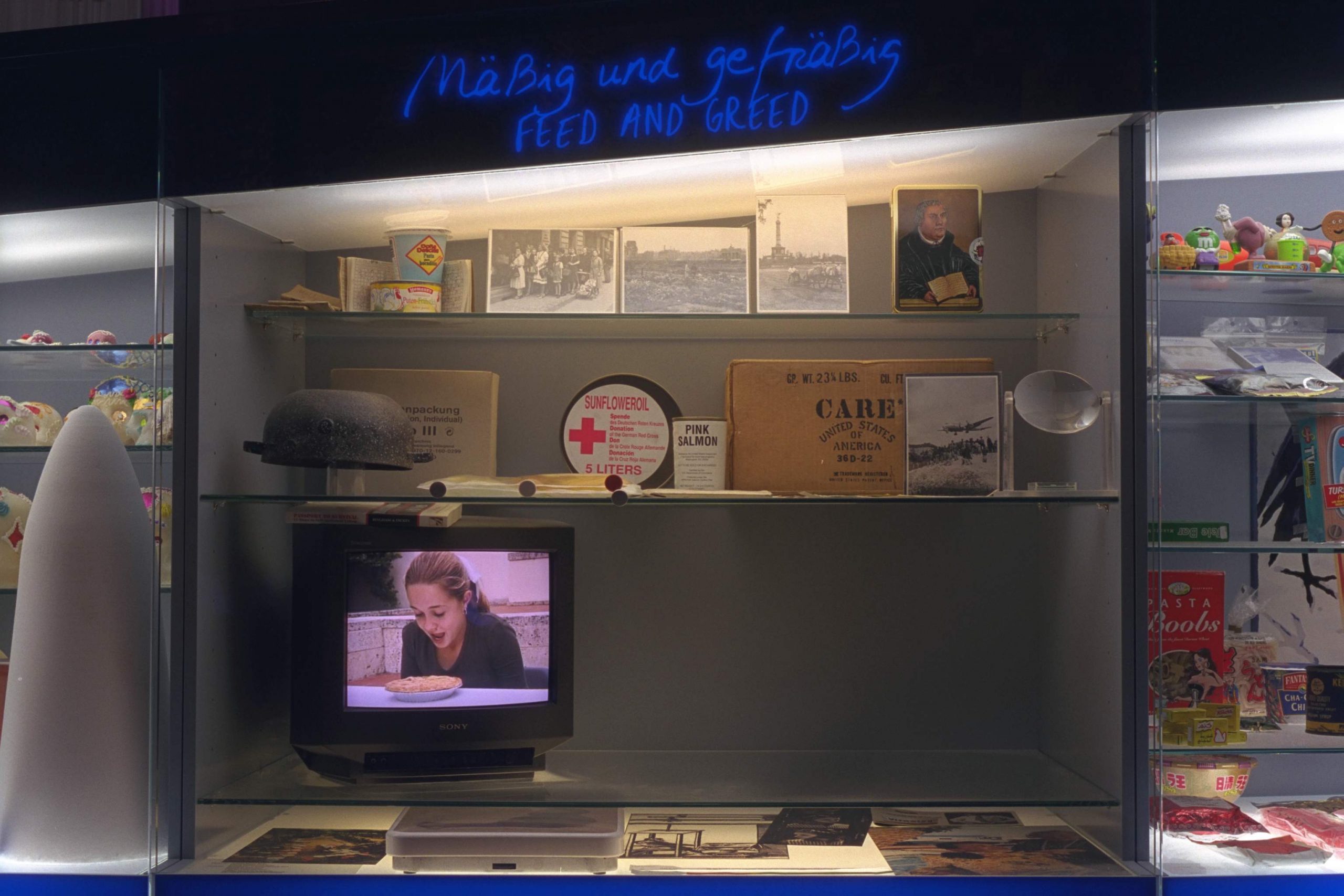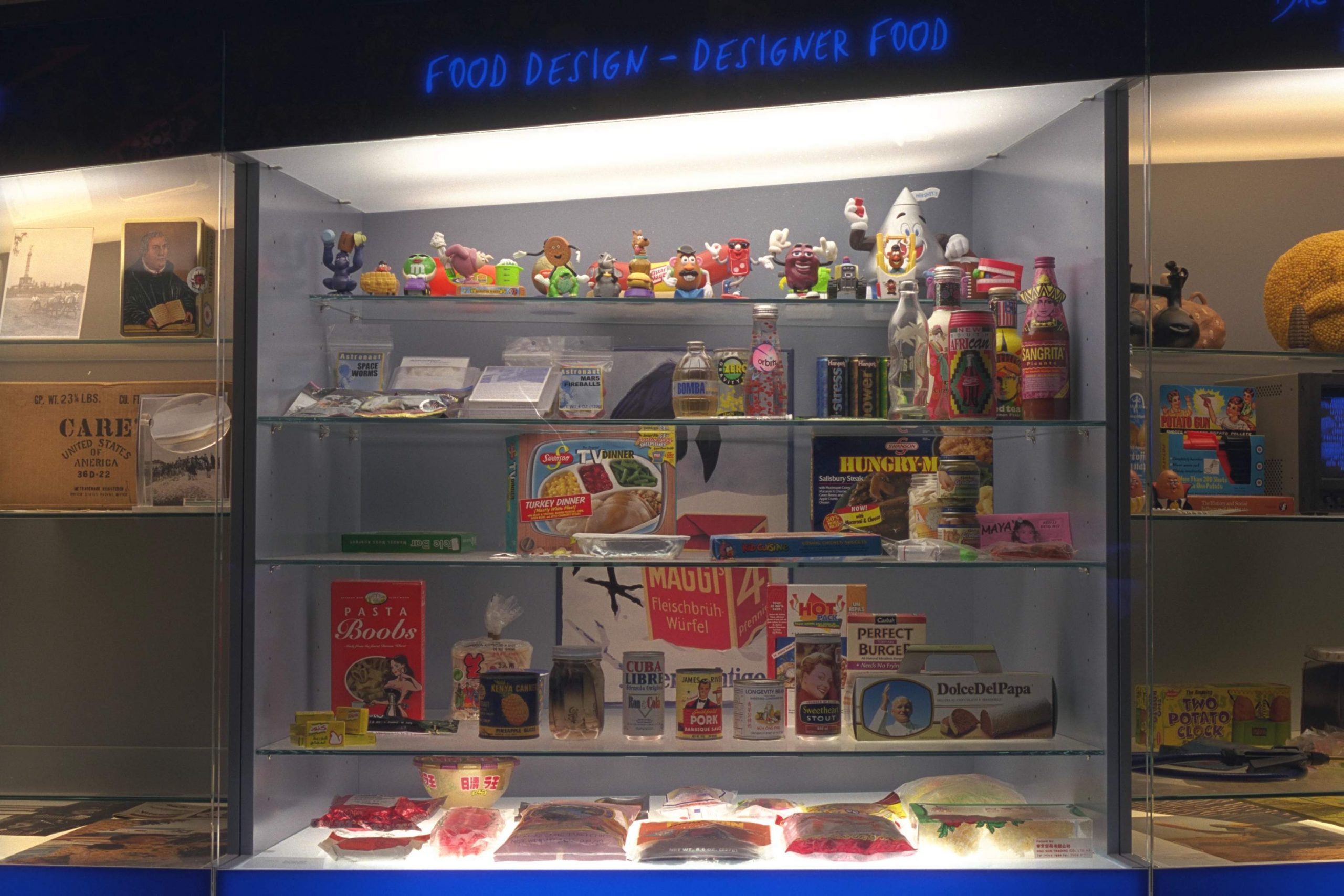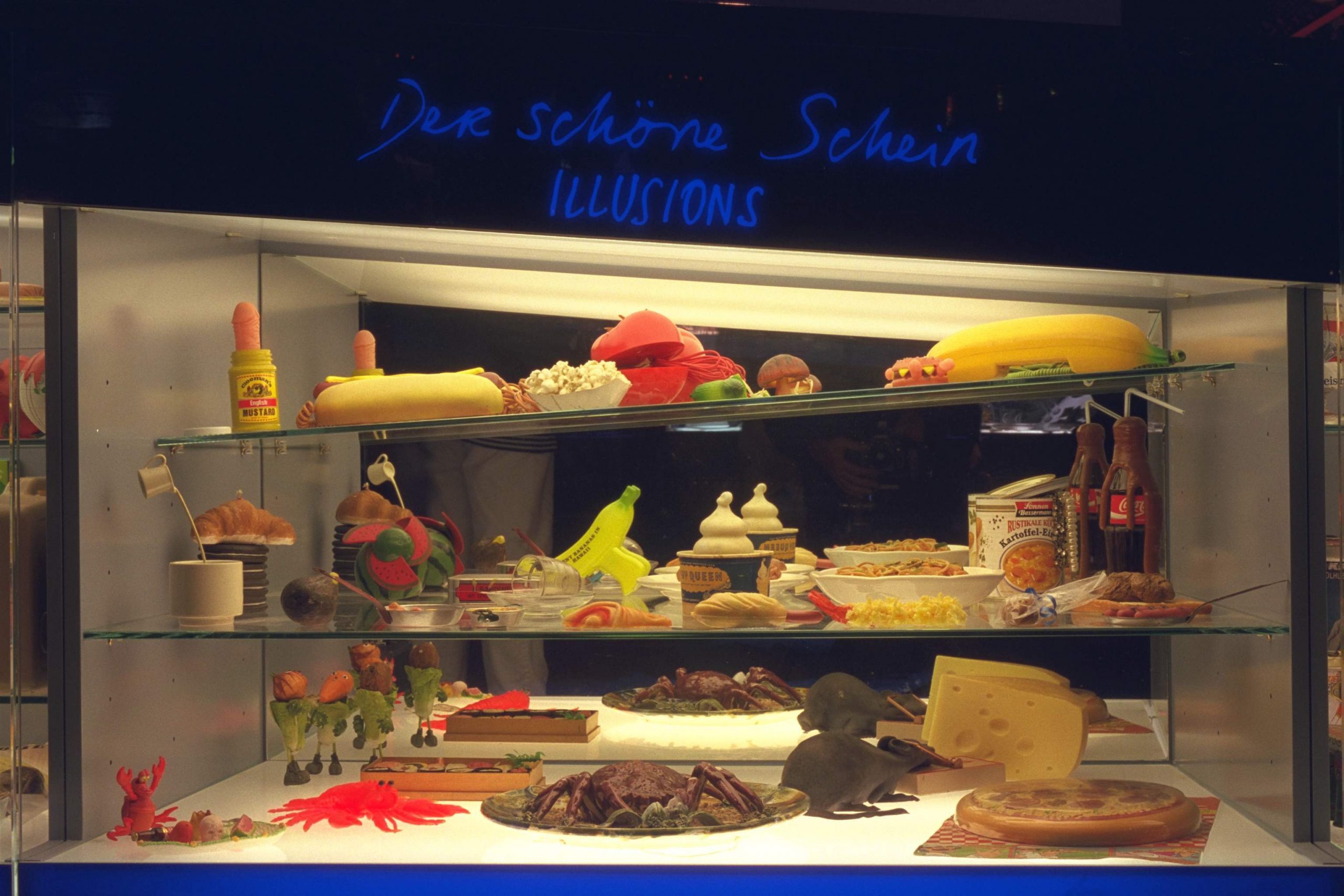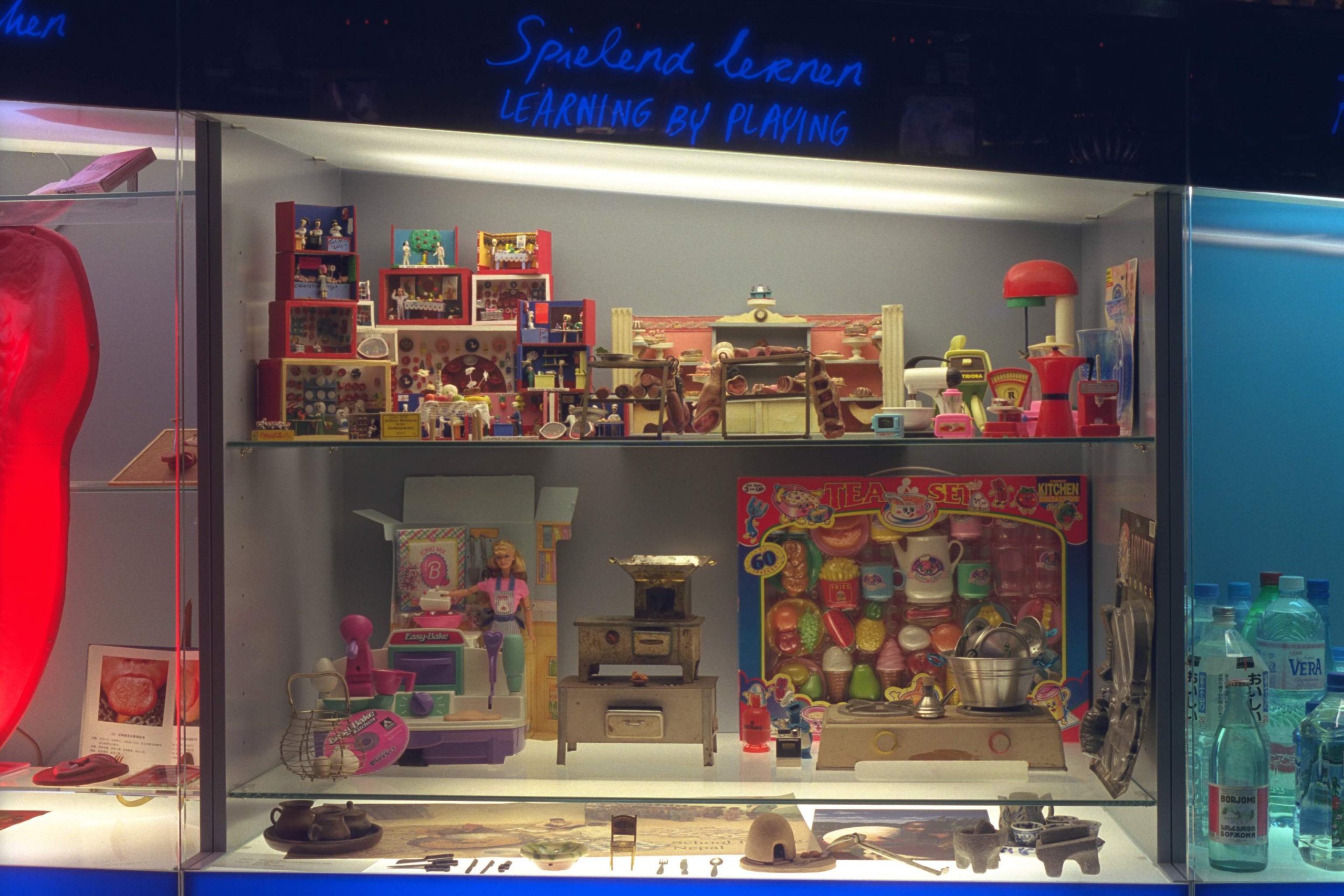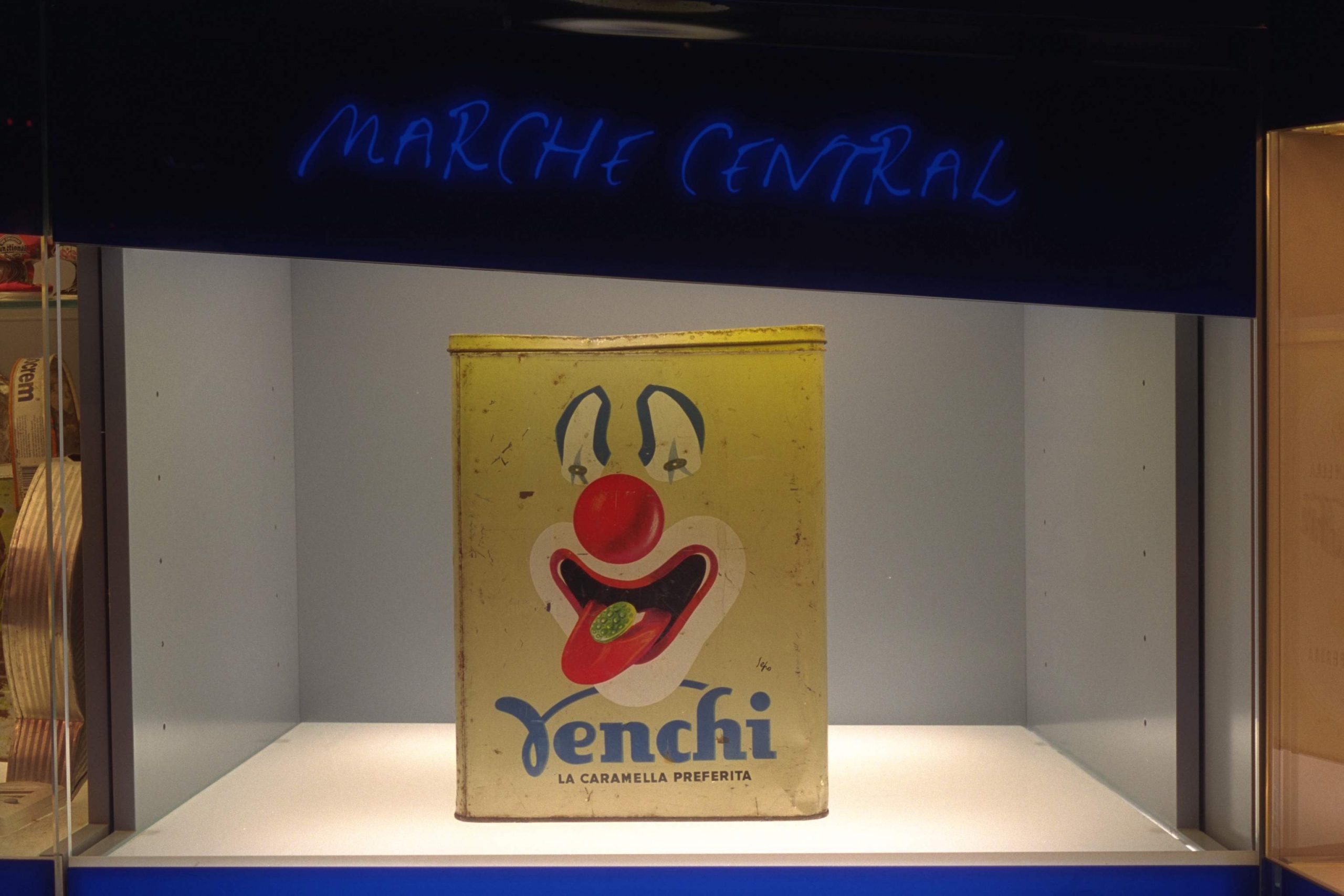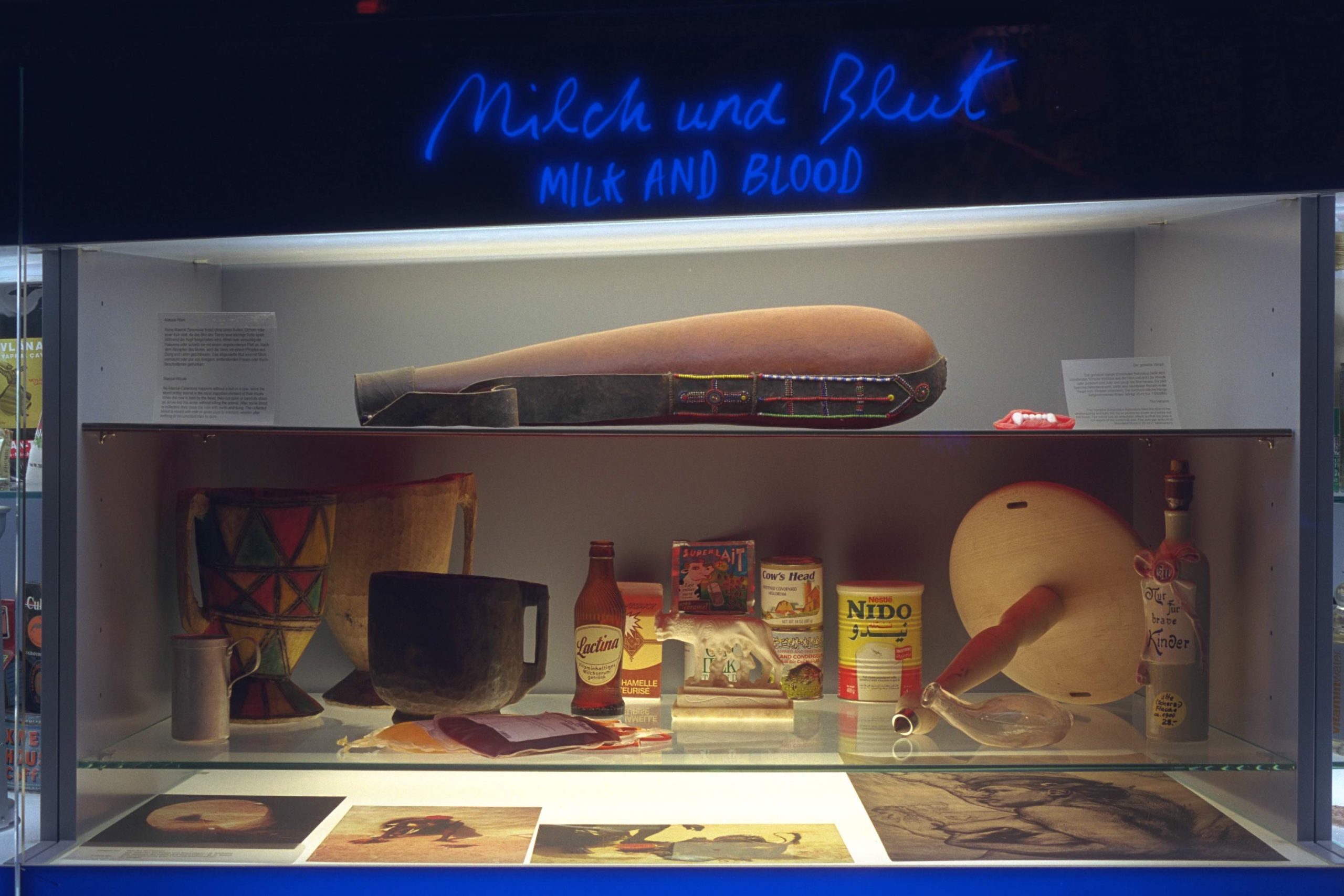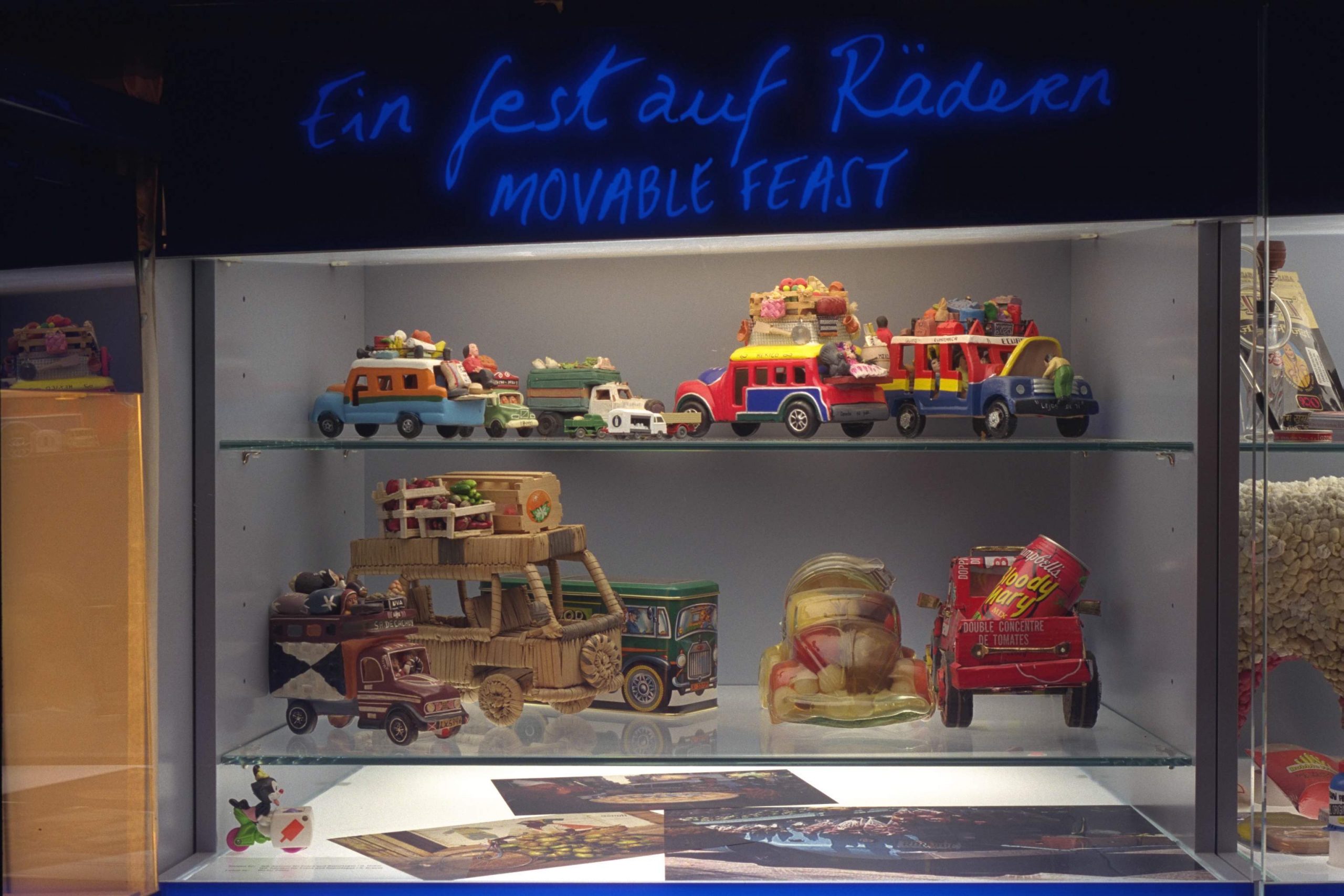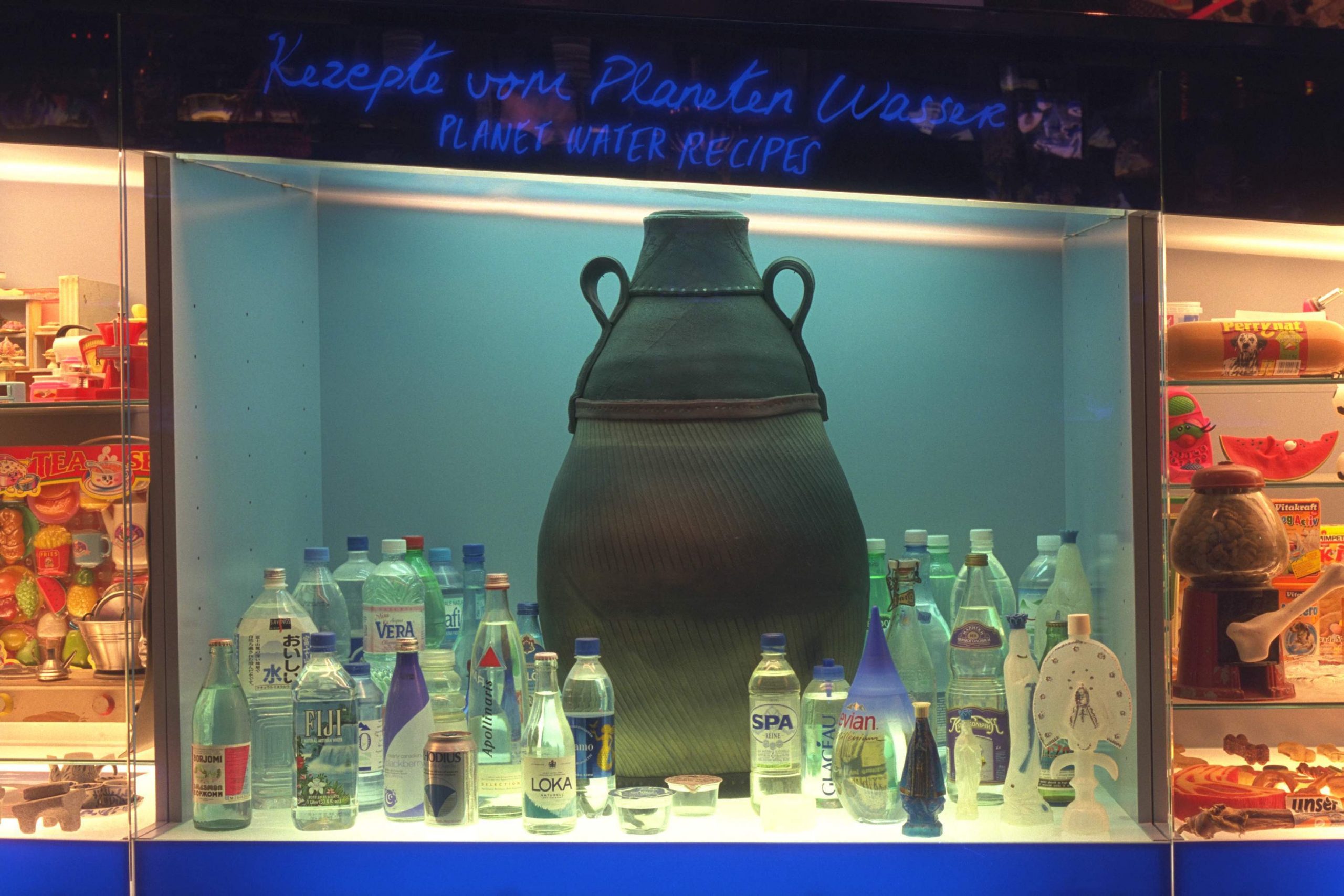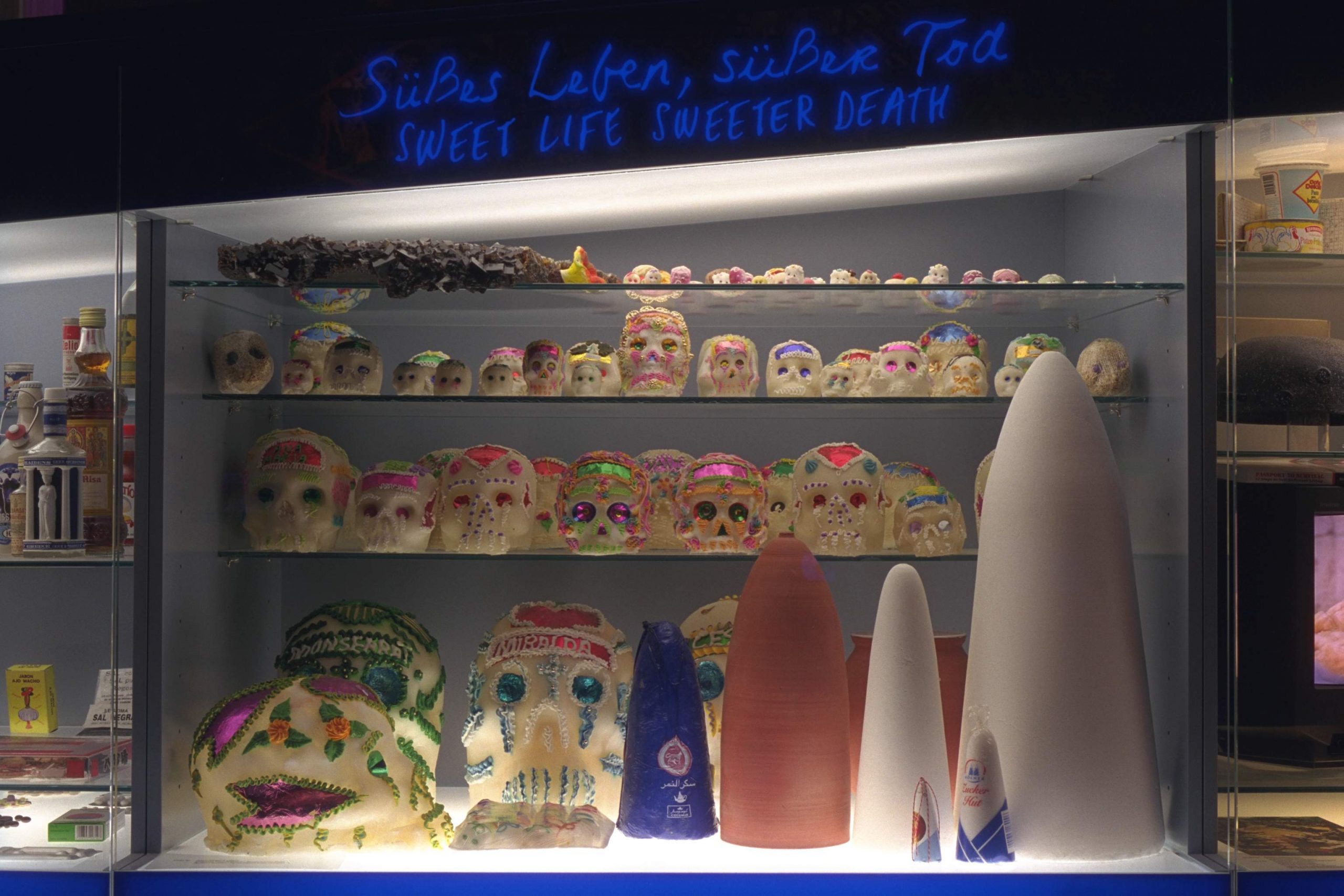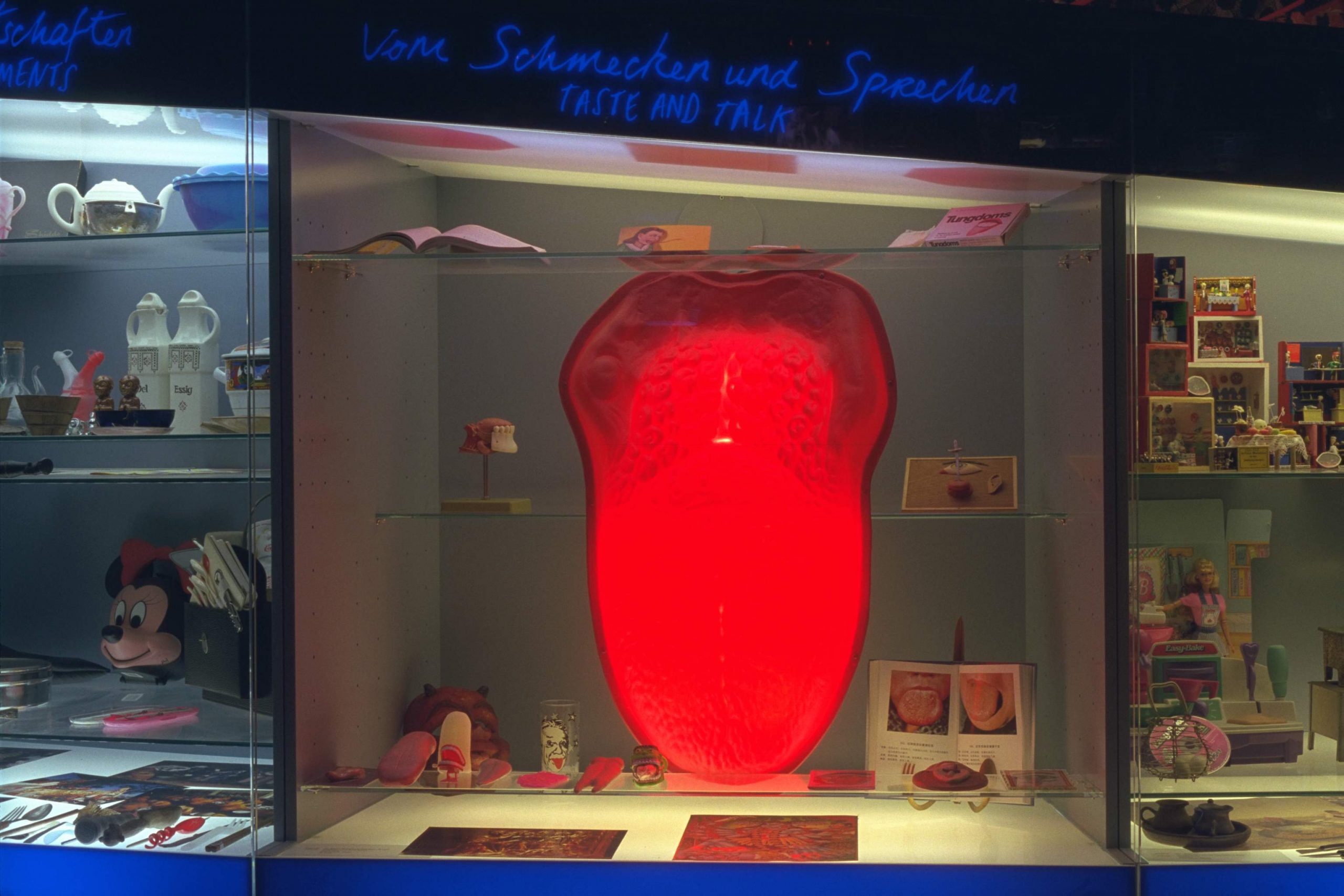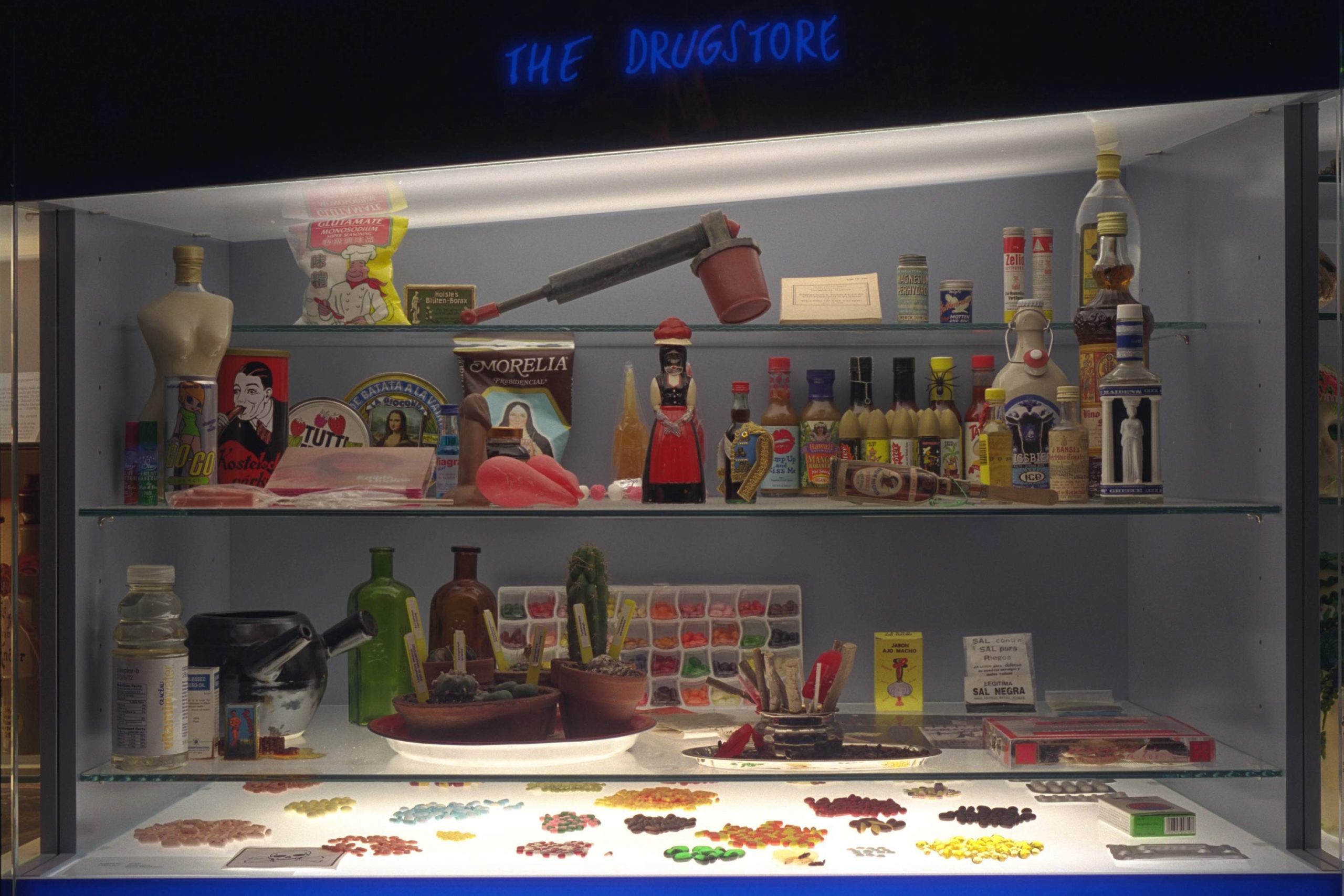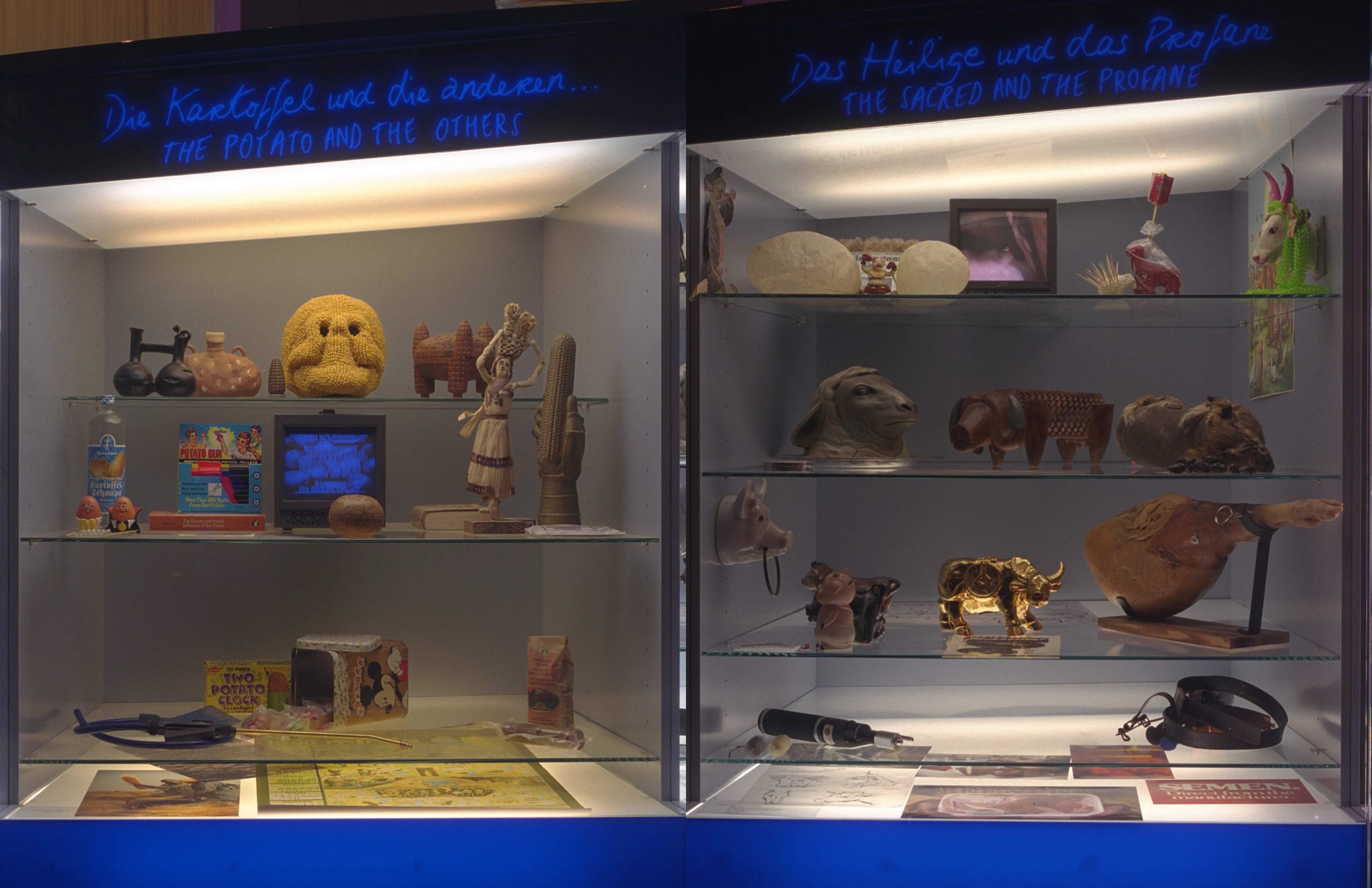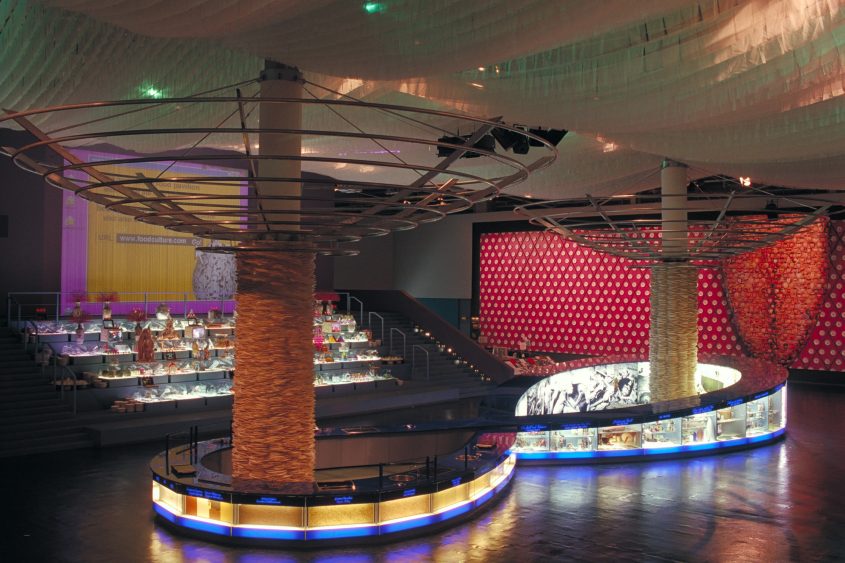
El Food Pavilion era una propuesta presentada dentro la Exposición Universal de Hanover del año 2000 que se extendía en un espacio de 1.500 m2 y se centraba en la experimentación de la comida como parte integral de la experiencia cultural humana. Se trataba de una obra con numerosos proyectos, un episodio fundamental para entender globalmente no solo el concepto de “Food Culture”, sino también sus metodologías de trabajo y las líneas temáticas que lo estructuran. El proyecto se llevó a cabo después de dos años de investigación y la creación de un grupo de trabajo.
En el pabellón, la disposición de las diversas intervenciones seguía un programa temático similar a un microcosmos. Al entrar, se encontraba la pieza más representativa: la Infinity Table, una mesa de 41 m. largo cuya forma rememoraba el signo matemático del infinito y que actuaba como punto de encuentro para el intercambio y la comunicación entre los visitantes. Toda la parte baja estaba constituida por vitrinas de cristal iluminadas que contenían, por un lado, alimentos secos como frijoles, maíz y arroz; y, por otro, diversos objetos, productos y documentos relacionados con la alimentación y cedidos por la Colección FoodCultura. En uno de los bucles de la mesa, se instaló una cocina de alta tecnología para los más de cien chefs, profesionales y amateurs que vinieron de todo el mundo para formar parte de la Exposición Universal. En ella, se ofrecían degustaciones de insectos y otros platos exóticos con el fin de estimular los sentidos del olfato y el gusto de los visitantes. Como contrapunto, dentro del bucle más alto, se mostraban imágenes de violencia, hambre, contaminación y desechos.
Uno de los elementos más destacados de la Infinity table era la Egg Dream Collection, que reunía dos intervenciones complementarias. Por una parte, una compilación de escritos, artefactos, juguetes y otros materiales que exploraban el valor simbólico y universal del huevo desde distintas perspectivas (científica, funcional, humorística…); por otra parte, las propuestas realizadas por un grupo de artistas (Louise Bourgeois, Ann Hamilton, Rebecca Horn, Regina Silveira, Jana Sterbak, Eulàlia Valldosera e Irene F. Whittome), invitadas a trabajar a partir de un huevo de avestruz y una caja como únicos elementos iconográficos y creativos.
Ocupando todo el lateral del pabellón aparecía el proyecto Cities, Tastes and Tongues [Ciudades, Sabores y Lenguas], situada en el muro lateral y conformada por dos trabajos diferentes. El primero, City Plates, era una instalación realizada con platos de cerámica que representaban multitud de proverbios, imágenes, costumbres, mapas y recetas de la cultura alimentaria de veinticuatro ciudades. El segundo, Tongue of Tongues, era un collage de 8 m. de altura con forma de lengua y compuesto por cientos de fotografías de lenguas humanas, conformando así un retrato del órgano universal del gusto, el lenguaje y el placer.
Por otro lado, el Laptop Altar se ubicaba en la zona central del pabellón y adoptaba la fisionomía de un gigantesco ordenador portátil. En la pantalla, Spaghetti Screen, realizada mediante hilos sintéticos, se proyectaban datos e imágenes descargados de Internet. Dentro de las teclas, que funcionaban a modo de vitrinas, había cientos de objetos que mostraban las conexiones entre comida, religión y espiritualidad.
Asimismo, existía un área titulada Garden of Edible Delights [Jardín de las delicias comestibles] que se situaba en el muro frontal del pabellón y exploraba las modalidades agrícolas a partir de los ciclos de crecimiento y descomposición. En ella se incluían diversas instalaciones: In-Vitro Wall, The Pouches Wall, Fecundity Ceiling, L’ou com balla y Eden’s Picnic. Confrontando naturaleza y artificio, In-Vitro Wall [Muro in vitro] mostraba un conjunto de 560 recipientes circulares; iluminados por dentro e incrustados en la pared, contenían más de 300 tipos diferentes de patatas y aludían a la fertilización asistida y a su impacto en los alimentos y consumo humano. Visto desde lejos, cada recipiente formaba un punto LED que, a su vez, reproducía la palabra DIVERSITY. The Pouches Wall [El muro de las bolas] era una instalación en la que crecía un huerto vertical de verduras y plantas aromáticas, irrigadas a intervalos desde el Fecundity Ceiling [Techo de la fecundidad], un techo realizado con pechos de plástico. Enfrente se ubicaba la fuente de “L’ou com balla”, con un huevo de gallina que flotaba sobre un chorro de agua. Remitía a una tradición catalana de ritualización del tránsito de la primavera al verano. Por último, aparecía el Eden’s Picnic [Picnic del Edén], una pieza que cuestionaba el orden y la mecánica naturales. En este ámbito se unió el trabajo escultórico con manzanos vivos de la artista Natalie Joiris y unos bancos de cristal, situados a nivel del suelo y rellenos de material orgánico (compost).
Dispersa por el espacio expositivo, otra sección llamada African Projects invitaba a mirar la leche, el pescado, la yuca, las langostas y los agutíes como fenómenos culturales, vinculados con las líneas nutricionales de sus respectivos contextos sociales. El hambre, la desnutrición y los cultivos sostenibles eran algunos de los temas explorados por el pabellón en relación con la cultura culinaria africana de Malawi, Burkina Faso, Camerún y Mauritania. Cubriendo toda la pared de esta sección, en el muro trasero del pabellón, había un collage de telas africanas en el que coexistían símbolos representativos de las prácticas agrícolas ancestrales con distintos iconos tecnológicos modernos.
Los agutíes son unos roedores de gran tamaño cuya carne, de precio muy elevado, es muy apreciada por sus proteínas. En Benin, partiendo de una iniciativa comunitaria, los agutíes se cazan, se domestican y se venden en el mercado. Este proyecto de sustentabilidad representó una fuente de recursos para centenares de familias. En el Food Pavilion se construyó una “casa de los sueños” que alojaba ejemplares de esta especie. El habitáculo fue diseñado como un apartamento urbano, con mobiliario metálico, cama, baño y un televisor donde se mostraban videos de cómo se crían, sacrifican y cocinan estas ratas de campo.
La Locust Installation [Instalación de la langosta] era una habitación doble, vista a través de una ventana de vidrio en la que se había grabado una representación antigua de las siete plagas bíblicas. La pared exterior de la exhibición estaba cubierta de langostas secas, un bocadillo común en algunas culturas. Además, una jaula de alambre giratoria con forma de 747 y llena de langostas vivas, era visible a través de la ventana.
Por último, antes de la salida del pabellón, se encontraba el mural de los Platos Prohibidos, una gran pizarra participativa en la que los visitantes podían escribir refranes y frases relacionadas con cuestiones de género, violencia, control y ética.
Vitrinas – Infinity Table

